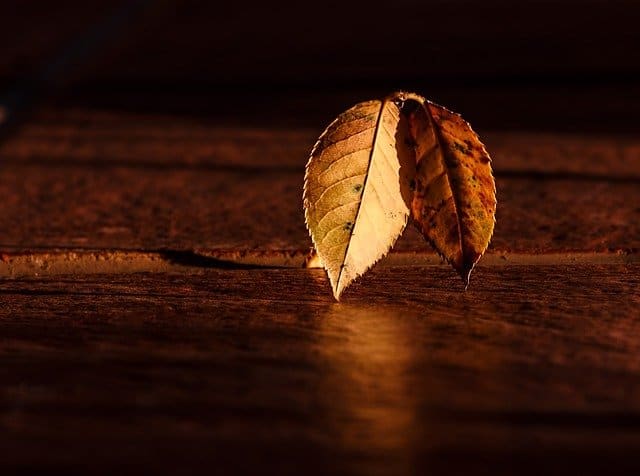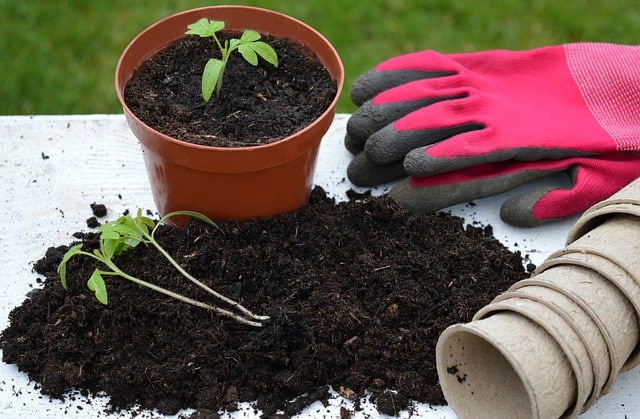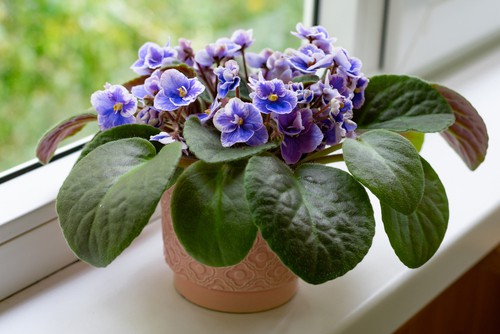Are your African violet leaves turning brown? The reason African brown leaves turn brown is relatively straightforward.
African violets are thought to be delicate, yet when grown under the right conditions, they are actually fairly resilient.
African violet leaves turn brown because of the aging process, watering issues, and too much fertilizer. When the leaves of African violet plants turn brown, they can begin to turn mushy and can eventually die.
If your plant has issues, you must evaluate the amount of sunlight, water, and nutrients your plant gets. That way, you can establish better plant care techniques.
This article discusses African Violet leaves turning brown, why they turn brown, and what you can do to prevent browning leaves. Continue reading to learn more.
Learn more from other related posts:
Reasons for African violet leaves turning brown:

There are many reasons why African violet leaves turn brown, like the aging of leaves, bad watering habits, and normal growth. Leaf scorching is a common issue for plants left in direct sunlight. Scorched leaves can cause your leaves to turn brown and mushy, making them vulnerable to early death.
The browning of leaves is a normal part of the plant’s aging process. Leaves turning brown is not always a bad thing. It can mean your plant is dying of old age, which you cannot prevent. Pay attention to where your plant’s leaves are browning. When only some parts of your plant die, it can appear very similar to old age.
In addition, some leaves will turn brown as it grows naturally. These leaves did not get enough nutrients during their growth because of uneven water or fertilizer distribution.
Varying root sizes or root damage can also be causes of normal growth problems. It is best to remove these leaves so new ones can grow in their places.
Water deprivation and overwatering are two significant reasons African violet leaves turn brown. African violets are sensitive to water. Therefore, they are prone to water leaf spotting and poor watering habits. If your soil is soaked, it is a sign of overwatering. In contrast, parched soil is a sign of underwatering.
Leaf spotting is another issue caused by water problems. Leaf spots are a problem caused by water spillage on the tops of leaves.
Brown spots on African violet leaves can be problematic because it causes unsightly brown spotting on the leaves, damaging the plant’s health. These water spots can be removed from your plant but will not go away naturally.
1. How does sunlight turn African violet leaves brown?

Too much sunlight can scorch your plant leaves and cause your African violet leaves causes leaf scorch. Leaf scorch occurs when you leave your plant in direct sunlight for too long. Leaf scorch causes your leaves to turn brown and mushy.
Leaf scorch is a hazardous problem for African violet leaves caused by too much direct sunlight. The benefit of leaf scorch is it is a clear sign you need to move your plant to a new location. Move your plant from the sunlight into a more shaded area, so it does not receive direct sunlight all day.
2. How does soil cause African violet leaves to turn brown?
The type of soil you use while potting your African violet is critical to its survival since they require nutrient-rich, aerated soil.
Change your soil mixture when your leaves begin to brown. Old soil is known to lose its nutrient value, making it unsustainable for African violet plants.
Add fertilizer to your plant’s soil to give your African violet leaves the necessary nutrients to grow. For optimal growth, evenly distribute the fertilizer and add new fertilizer at least once every two weeks.
Too much fertilizer can be an issue for African violets because, like any other plant, it can cause uneven nutrient distribution. Uneven nutrient distribution may make your African violet leaves turn brown. Check for salt buildup along the rim to see if there is too much fertilizer.
Is African violet leaves turning brown a bad thing?

It is not bad for African violet leaves to turn brown since it can be addressed in most cases. African violet leaves turning brown usually represents the normal aging process, which can be disappointing since it is the end of your plant’s life.
When African violet leaves turn brown, it can also mean your plant is going through a specific issue like too much water or sunlight, which you can address. It is not necessarily bad for leaves to turn brown, but the plant will eventually lose all its leaves if you do not address it.
Why are my African violet leaves turning brown?
The browning of leaves is a sign that your plant can suffer from serious issues, like, water deprivation, incompatible soil, or old age. In many cases, unless you treat these problems, they could result in death.
When your plants turn brown or mushy, it can mean your plant is unhealthy or will die of old age. You should immediately try remedies like changing soil or adjusting your watering routine if you want to stop the browning of your leaves and return the color to your plant.
How do you stop African violet leaves from turning brown?

You can fix African violet leaves that are turning brown by changing their watering routine, repotting them in different soil, or removing them from direct sunlight. It can also help to replant them in suitable soil to help the roots grow properly.
Remember, not every instance of browning leaves is an issue you can fix, but once you find the source of the problem, you can usually improve the browning of leaves.
Check the dampness of your soil and adjust your watering routine depending on how damp your soil is. Water spots on your plant leaves signify receiving too much water, so you should change your African violet’s watering routine. You should water your plant when the soil is dry to the touch and no sooner.
Conclusion
African violet leaves turn brown when they receive too much sunlight and water or reach old age. Leaf scorching, potting, and watering are some of the most prominent issues for African violet plants. These can quickly cause their leaves to turn brown.
In some cases, the browning of your African violet leaves can be a problem, but luckily, plant owners can solve the issue by adding fertilizer or changing their watering routine.
Relocating and repotting your African violet plant is a good idea for plants that receive too much sunlight so you can get rid of scorched and browning leaves.
Frequently Asked Questions
Should you repot African violet leaves after they turn brown?
Repotting your African violet plant in new soil can prevent your African violet plant from turning brown. When you repot the African violet plant, you replenish the soil with nutrients and fertilizers, plus relocate somewhere with less sunshine.
Should you cut off brown African violet leaves?
It would help your African violet’s lifespan if you cut off brown leaves. These dying leaves may take the necessary nutrients that prevent your living African violet leaves from thriving.
How do you cut off brown leaves?
Cut off the dying brown leaves using a pair of gardening shears at the base of the brown leaf. Shearing the leaves away lets existing plants get nutrients, and new ones regrow in place.

Hey, I’m Lisa and I’ve been an avid gardener for over 30 years. I love writing, talking and living in the garden! Feel free to connect with me on my socials below

